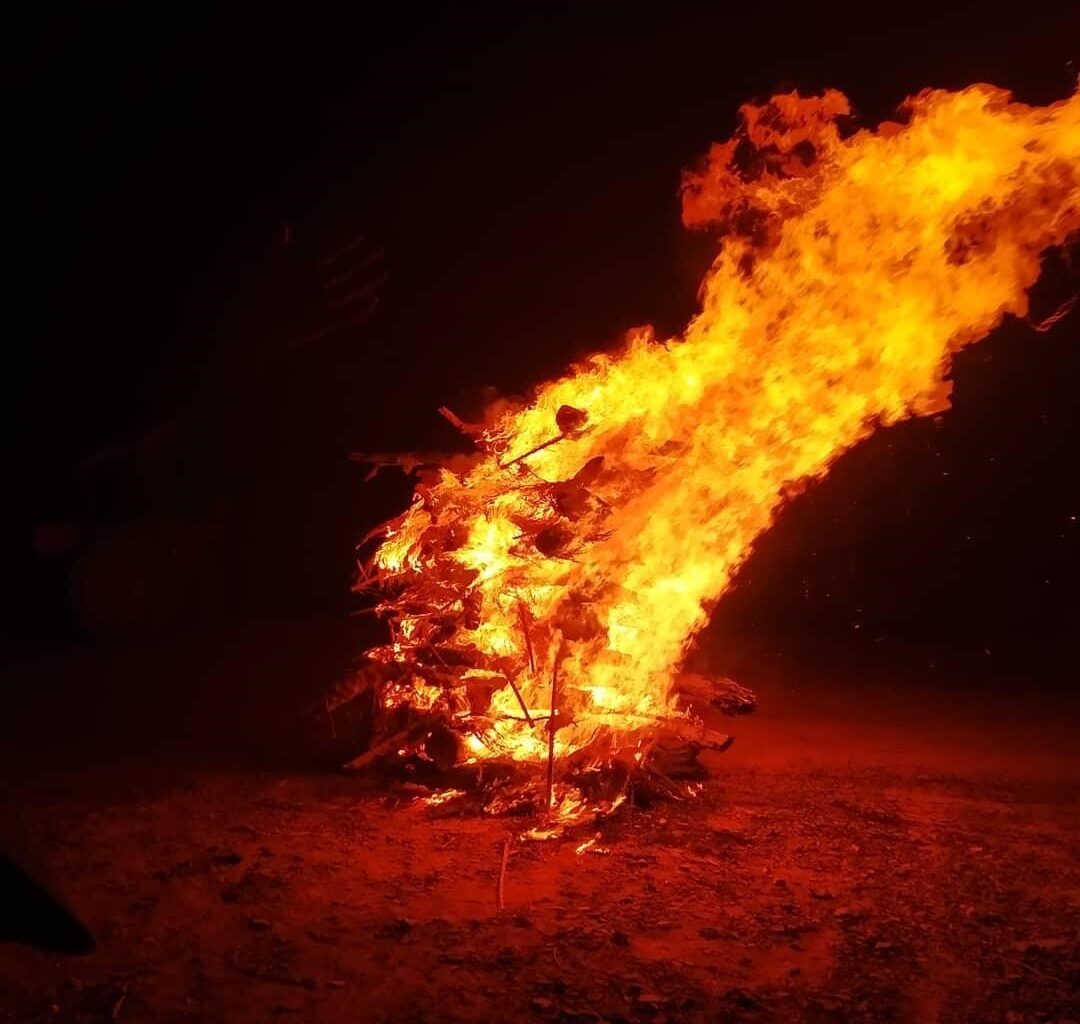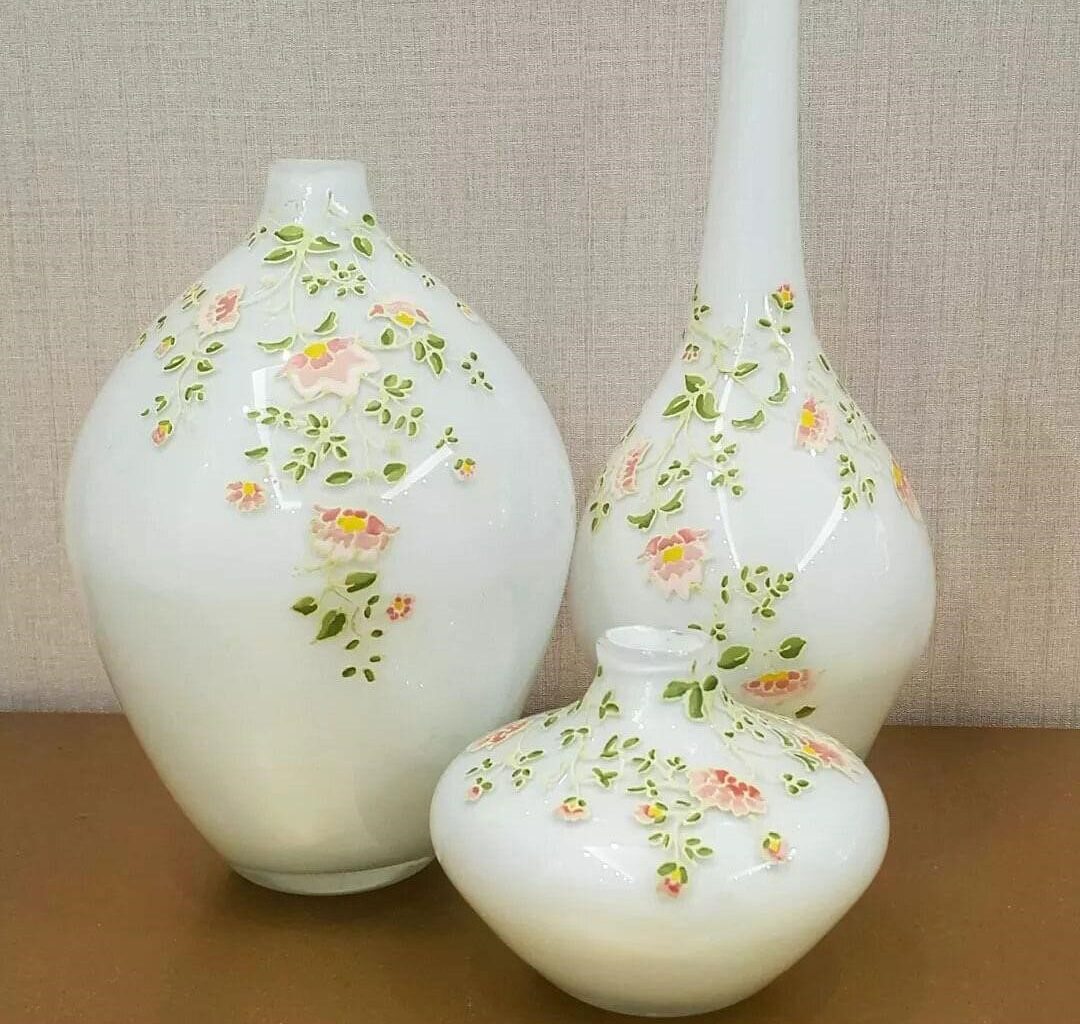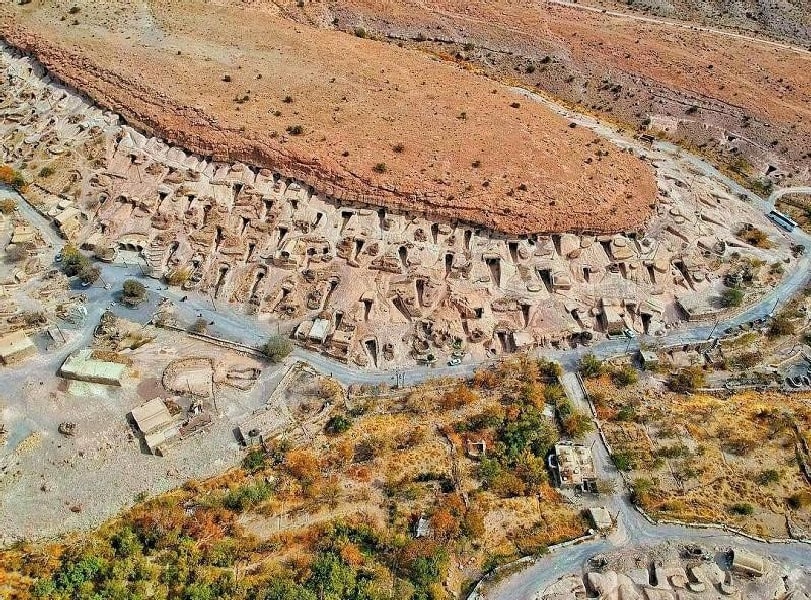
Before introducing the cultural landscape of Maymand village, we should learn more about its history as one of the famous Kerman tourist attractions. Meymand village is one of the oldest settlements in Iran included on the list of Iranian UNESCO World Heritage Sites. This area is one of the most beautiful ancient villages in the world that has preserved its cultural, natural, and historical legacy.
This 12,000-year-old village is located in Kerman province, between Rafsanjan, Shah-e Babak, Anar, and Sirjan. Maymand (Meymand) is an ancient soft rock village that still has very stable forts.
Looking more closely at this village, you will see a stunning fort, surrounded by charming towers and houses in different directions. This is the reason why the cultural landscape of Maymand village has become a UNESCO tourist attraction.
Historical Monuments in Cultural Landscape of Maymand Village
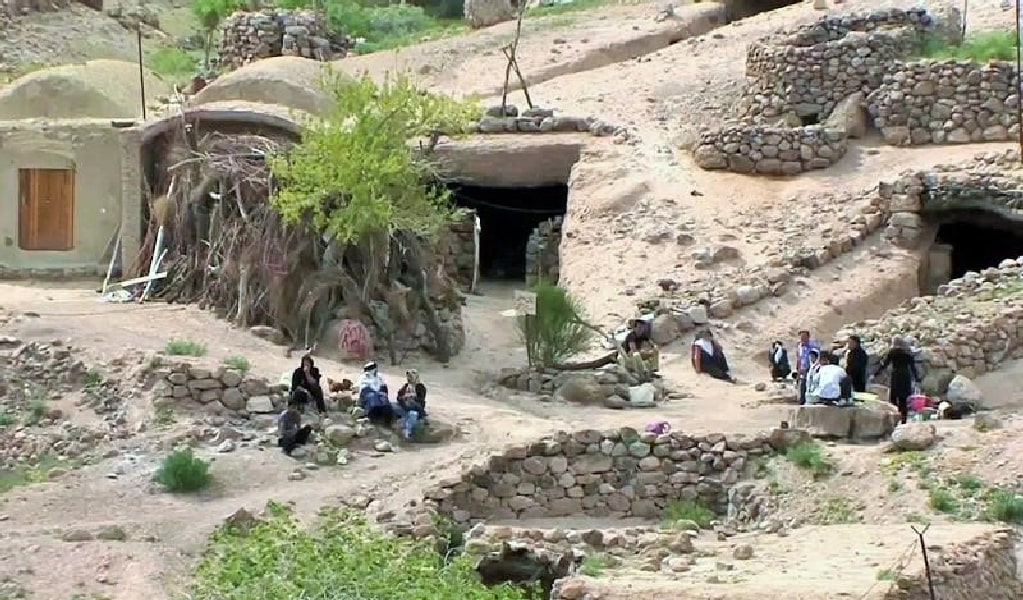
The village’s ancient inhabitants have left valuable heritage behind, including:
- Inscriptions
- 10,000-year-old carvings
- 6,000-year-old pottery
There are several ancient inscriptions in this village. Here is the translation of one:
“When the Maymand mountains split apart and their legends come true, a treasure is revealed that is only available to one who comes from the sun.”
The Meaning of Maymand
Maymand is a compound word: “May”, meaning “wine” and “Mand ” meaning”drunk “. The origins of the village go back to the pre-Islam period, it is said that before its construction, the men of the village used to store wine in hand-carved houses, in the middle of the rocks, and they were constantly drunk on wine. This is how they dug these holes in the heart of the rocks and built such extraordinary houses. However, some people believe that this word means “happiness and good fortune”.
Maymand Village and UNESCO-Greece Melina Mercouri International Prize
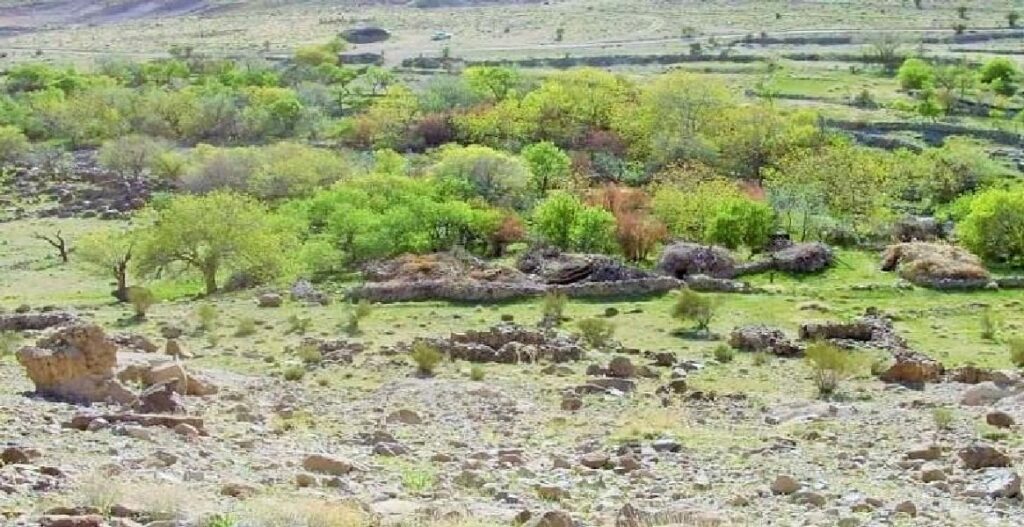
Greece, in collaboration with UNESCO and ICOMOS (International Council on Monuments and Sites), awarded the Melina Mercouri International Prize for the Safeguarding and Management of Cultural Landscapes to the historic village of Maymand in 2005. Maymand village as a tangible cultural heritage of Iran was the 7th cultural landscape to receive this award. The residents of this village have preserved their unique customs and rituals and still use some Sassanid words in their language and dialect.
Correlation of Maymand’s Inscriptions and Carvings
The remains of this rock-carved village with its ancient history are evidence of a time when humans were searching for the divine on top of the mountains. Mountains are a symbol of strength and stability, especially in Mithraism.
The buildings carved by our ancestors are a reminder of such efforts of Persians to seek divinity, during the spread of Zoroastrianism or Mithraism.
In this ancient Iranian religion, they believed in the invincibility and eternity of natural phenomena as pillars of creation. Such thoughts likely led them to sanctify these mountains. If we accept the theory that the first hand-carved monuments in this village were created in the worship of Mithra, then the foundation of the village can be attributed to the first Aryan tribes in Iran.
History of Maymand Village
Carving and inscriptions with an estimated age of 12,000 years and pottery with an estimated age of 2,000 to 3,000 years have been discovered in the cultural landscape of Maymand.
According to some archaeologists, the definitive evidence for the history of the village is the pottery discovered in this area. Since archeological exploration in this area is still ongoing, these estimates can be used to speculate about the history of the Maymand village until more evidence is found. So there is still disagreement among researchers about the beginning of the settlement in the Maymand historical village.
Some speculate that the hand-carved architecture in the village dates back to the arrival of Aryans to the Iranian plateau, especially since early Aryans and Medes considered mountains sacred. Hand-carving on mountains is one of the traditions of Mithraism.
However, some researchers believe that the Aryan tribes settled in the western regions upon entering the Iranian plateau and did not arrive in the east before becoming stable. Therefore, the Maymand settlement could not have been built in the early periods after their arrival. Some believe that this village was built by nomadic Parthian tribes, which resonates closer to the available evidence.
However, if we attribute the construction of Maymand to the Aryans, the village dates back to the 8th and 7th centuries BC, and if we attribute it to the Parthian era, it was built in the 3rd century BC. During the Sassanid period, this region was at the peak of its development and prosperity; But there is no mention of Maymand’s name in the books after the Sassanid era. Later, Yaqut al-Hamawi, a Muslim scholar, mentions in Mu’jam Al-Buldan that a battle took place between Yazdgerd III and the Arab army under the command of Mushaja Bin Masoud, which ended in Yazdgerd’s victory.
Village Life in Maymand Cultural Landscape
The geographical location and inaccessibility of the area in which the Maymand village is located have made this village safe from invasion and it has not changed much over time. This intactness can be seen even in the dialect and customs of the local villagers. Water and fire are still sacred to the people of this region and they swear by fire.
Since the soil is not suitable for farming, most of the village’s economy is based on animal husbandry and weaving. However, the successive droughts of recent years have caused problems in animal husbandry in the region.
Flora and Fauna of Cultural Landscape of Maymand Village
This village is located between mountains and plains. Its native trees are wild pistachios and wild almonds, which are currently very sparse. There are also mulberry and black mulberry trees inside the village. Some of the animals in the region are snakes, lizards, hedgehogs, turtles, and rabbits. Various wildlife such as deer, leopard, wolf, fox, mountain goat, partridge, and wild birds can be seen in the Maymand mountains.
Unique Architecture in Maymand Historical Village
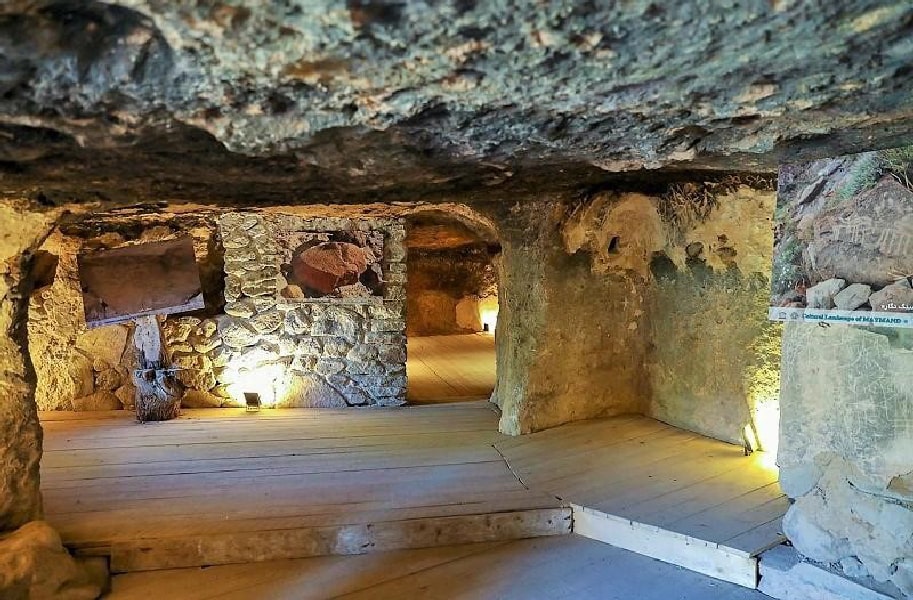
Dr. Mohammad Ebrahim Bastani Parizi, Iranian historian and translator described Maimand architecture in his book “History of Kerman”: “Maymand is one of the famous and old villages of Shahr-e Babak. All the rooms of this village are carved in the mountainside and the houses are built in the heart of the rocks. Every house in the heart of the mountain has three or four rooms, and in total, nearly three hundred alleys have been dug inside the mountain. For this reason, the houses do not have chimneys and heaters and are without cavities.
Stone, brick, or other construction materials have not been used in the construction of the houses here. In other words, there are no structures in the open space. On the contrary, they have built everything through digging and carving.
It can be argued that they did not feel the need to use building materials. With their unique style of carving, they made ledges of different dimensions to make beds, place kitchen utensils, etc.
Since the stoves were placed in closed rooms with no chimneys, burning wood left smoke traces on the ceiling and walls. This process has created an insulation effect that increases the durability of the rooms.
The rooms in these rural houses are not symmetrical and in order. In the local language, people called a house with several rooms and a stable “Kicheh”. Each unit is a Kicheh, and the largest Kicheh has an area of 90 square meters. This village has 406 Kichehs and 2560 rooms. Also, the Maymand historical village has a public bathhouse, a school, a mosque, and a Hosseiniyeh, which are still functional.
Visit the Cultural Landscape of Maymand Historical Village in Kerman
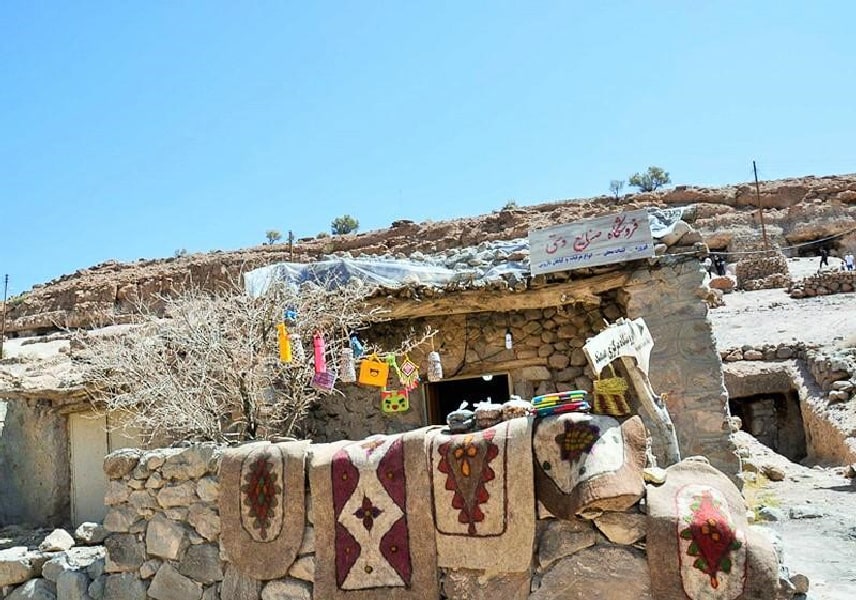
Many Iranians and international travelers visit this village to see this ancient settlement and learn about its cultural landscape. Walking around this village and looking at its stunning sights is an out-of-world experience. Time seems to stop and you find yourself transported back in time to ancient Persia.
We recommend that you spend the night in this village and check out its handicrafts. This historical remnant of ancient times is one of Iran’s tangible cultural heritage and is considered a spectacular tourist attraction and a World Heritage Site. If you are traveling to Yazd and Kerman on an Iran tour package, you can include a visit to this village in your itinerary.
Where is the Cultural Landscape of Maymand Village in Kerman?
Maymand village of Kerman is about 120 kilometers from Rafsanjan in Kerman province. To go to this village, we have to travel about 36 km on the Rafsanjan-Anar road or about 140 km on the Anar-Rafsanjan road to reach an intersection near Koshkuiyeh. From there to Maimand village, about 83 kilometers will remain.
For more information on traveling to Maymand village, check out the following location:
Frequently Asked Questions About the Cultural Landscape of Maymand Village
If you don’t find the answer to your question here, leave us a comment in the comment section below this post and ask your question; We will answer it as soon as possible.
How ancient is the cultural landscape of Maymand?
According to the discovered inscriptions, Maymand village was one of the first human settlements in the Iranian plateau. This village has been a settlement in different historical periods, including the Parthians, the Sassanids, and the Islamic era.
Why are some historical villages in Iran built inside rocks and mountains?
These rocky villages are a reminder of the time when people used to build such shelters to escape from predators and seek refuge from bad weather. They were safe from the cold and extreme heat in such shelters.
Is Maymand an inhabited village?
Life still goes on in the historical village of Maymand. The people of this village are engaged in animal husbandry and agriculture and live a semi-nomadic life. During the winter, they live inside the valley in caves carved out of soft rock. In addition to special customs, the people of this village still use the Sassanid Pahlavi words in their dialect.
What is the Melina Mercouri International Prize for the Safeguarding and Management of Cultural Landscapes and why was it awarded to Maymand village?
This prize is presented to sites that have preserved unique cultural, natural, and historical conditions. The Melina Mercouri Prize was awarded to this village in 2005 by the Greek government in cooperation with UNESCO and ICOMOS.






